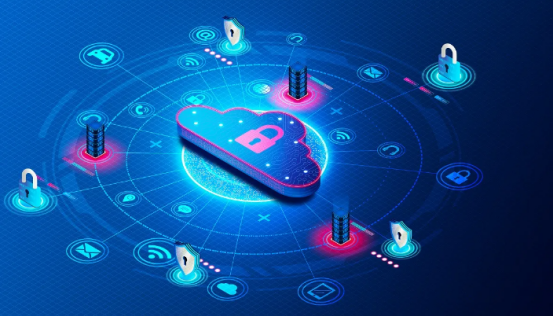In today's interconnected world, industrial systems are becoming increasingly vulnerable to cyberattacks. The importance of securing industrial embedded computers cannot be overstated, as these critical components serve as the backbone of numerous manufacturing and industrial processes. With cyberattacks posing a serious risk to operational integrity, understanding how to secure these systems is key to maintaining safety and efficiency. This article explores essential cybersecurity measures to protect industrial embedded computers, offering best practices and solutions for a more secure industrial environment.
Industrial embedded computers are designed for use in harsh environments and critical applications, ranging from factory automation to energy management. Unfortunately, as these devices become more connected through the Industrial Internet of Things (IIoT), they face a growing number of cybersecurity threats, including malware, unauthorized access, and even targeted ransomware attacks.
A successful cyberattack on an industrial system could disrupt production, lead to data breaches, and incur significant financial loss. The ramifications go beyond mere downtime—they can also result in equipment damage, compromised worker safety, and long-term damage to a company’s reputation.
To defend against the evolving landscape of cyber threats, industrial stakeholders need to implement a multi-layered approach to security. Below are several best practices that can help ensure the security of industrial embedded computers.
Secure boot is one of the foundational practices for safeguarding embedded systems. It ensures that only authorized and trusted software can be loaded during the startup process. By using cryptographic signatures, secure boot prevents malicious code from executing on industrial embedded computers.
The implementation of secure boot should be a priority for manufacturers and end-users alike, as it minimizes the risk of malware gaining persistence at a low level within the system.
Encrypted communication is essential to prevent unauthorized access and data interception. Industrial embedded computers often exchange sensitive data within industrial control systems. Implementing strong encryption protocols, such as TLS (Transport Layer Security), helps secure these data streams against attacks like eavesdropping and man-in-the-middle.
This practice is especially important in environments where remote monitoring and management are conducted. Encrypted communication guarantees that data integrity is preserved and prevents sensitive operational information from falling into the wrong hands.
Integrating secure hardware modules, such as Trusted Platform Modules (TPM), can significantly enhance the security of industrial embedded computers. TPMs offer hardware-level security features that ensure the system integrity by storing cryptographic keys, certificates, and passwords securely.
By leveraging secure hardware modules, industrial systems can mitigate the risks of data tampering and protect sensitive information even if the operating system is compromised.
Cybercriminals often exploit vulnerabilities in outdated firmware to gain unauthorized access to systems. Keeping the firmware of industrial embedded computers up to date is a critical defense mechanism.
Establishing a process for regular updates and patching is vital. Manufacturers should supply firmware updates, and end-users must have procedures in place to apply these patches promptly. In environments where downtime is critical, planning for scheduled maintenance windows can help avoid disruption while ensuring the systems are always protected.
Network segmentation involves dividing the industrial network into smaller segments or zones. This practice is particularly effective in limiting the spread of cyber threats. In the event of a breach, network segmentation ensures that an attacker cannot easily move laterally to access other critical systems.
For industrial embedded computers, network segmentation provides an added layer of security by isolating devices based on their function and importance, thus minimizing the risk of a successful attack causing widespread damage.

Apart from best practices, several cybersecurity solutions can help enhance the overall protection of industrial embedded computers.
Intrusion Detection and Prevention Systems (IDPS): Deploying an IDPS can help identify suspicious activities within the industrial network, enabling prompt action against potential threats.
VPN for Remote Access: When remote management is necessary, using a Virtual Private Network (VPN) can ensure secure access to industrial embedded computers, mitigating risks associated with remote connections.
Endpoint Security Solutions: Industrial embedded computers should be equipped with reliable endpoint security software capable of detecting malware and other forms of malicious activity in real time.
Technology alone cannot secure industrial embedded systems. It is crucial to foster a culture of cybersecurity awareness among employees. Regular training on recognizing phishing attempts, understanding the importance of secure passwords, and following best practices can make a significant difference in maintaining the security of industrial environments.

The cybersecurity of industrial embedded computers is a growing concern as these systems become increasingly connected. By implementing best practices such as secure boot, encrypted communications, and secure hardware modules, alongside utilizing effective security solutions, industries can build a robust defense against evolving cyber threats. Investing in cybersecurity not only protects against financial and reputational losses but also ensures the continued safe and efficient operation of industrial systems.
At BVS, we specialize in providing high-quality industrial embedded computers with built-in security features designed to protect your operations from cyber threats. Our commitment to cybersecurity helps our clients maintain the safety, reliability, and efficiency of their industrial systems. For more information on our products and services, please visit our official website at www.bvsipc.com. If you want to learn more about securing your industrial systems or need expert guidance in selecting the right embedded computer for your business, reach out to BVS today. Let us help you safeguard your future.
Read more about industrial embedded computer:
Downtime is one of the most significant, yet often underestimated, threats to a business's profitability. This is particularly true in industries where uninterrupted operation is key, like manufacturing and logistics. Even a brief halt can result in thousands, if not millions, of dollars in losses.
Top 3 Mistakes to Avoid When Installing Industrial Embedded Computers
Industrial embedded computers play a pivotal role in many sectors, powering crucial operations in a wide array of industries. However, the process of installing these embedded PCs can be more complex than it appears.
The Hidden Costs of Selecting the Wrong Embedded Computer for Industrial Applications
An industrial embedded computer is designed to handle challenging tasks in environments such as manufacturing plants, transport hubs, or automation systems. Unlike regular computers, embedded computers are built to withstand extreme conditions, ensuring both durability and reliability.

Click to confirm
Cancel